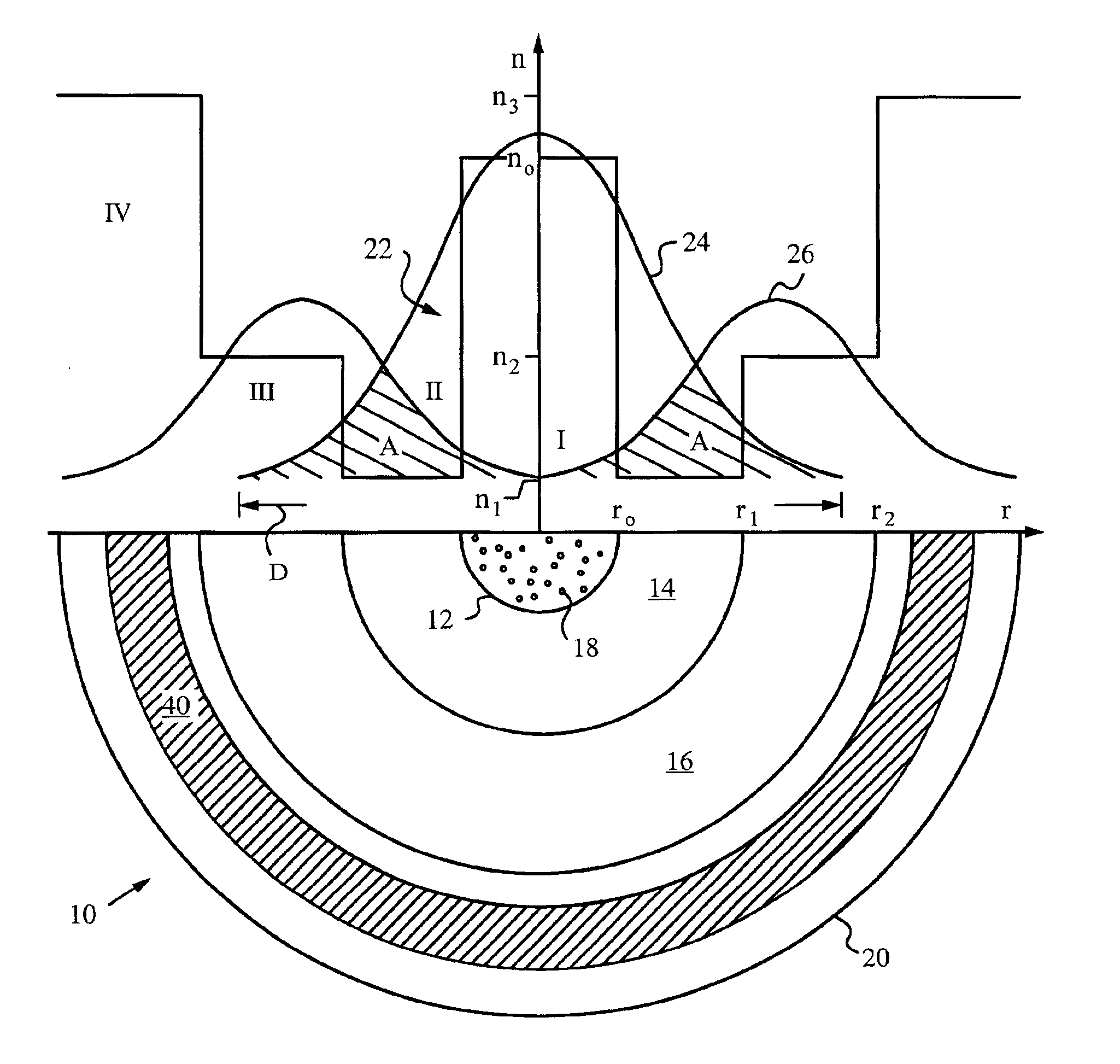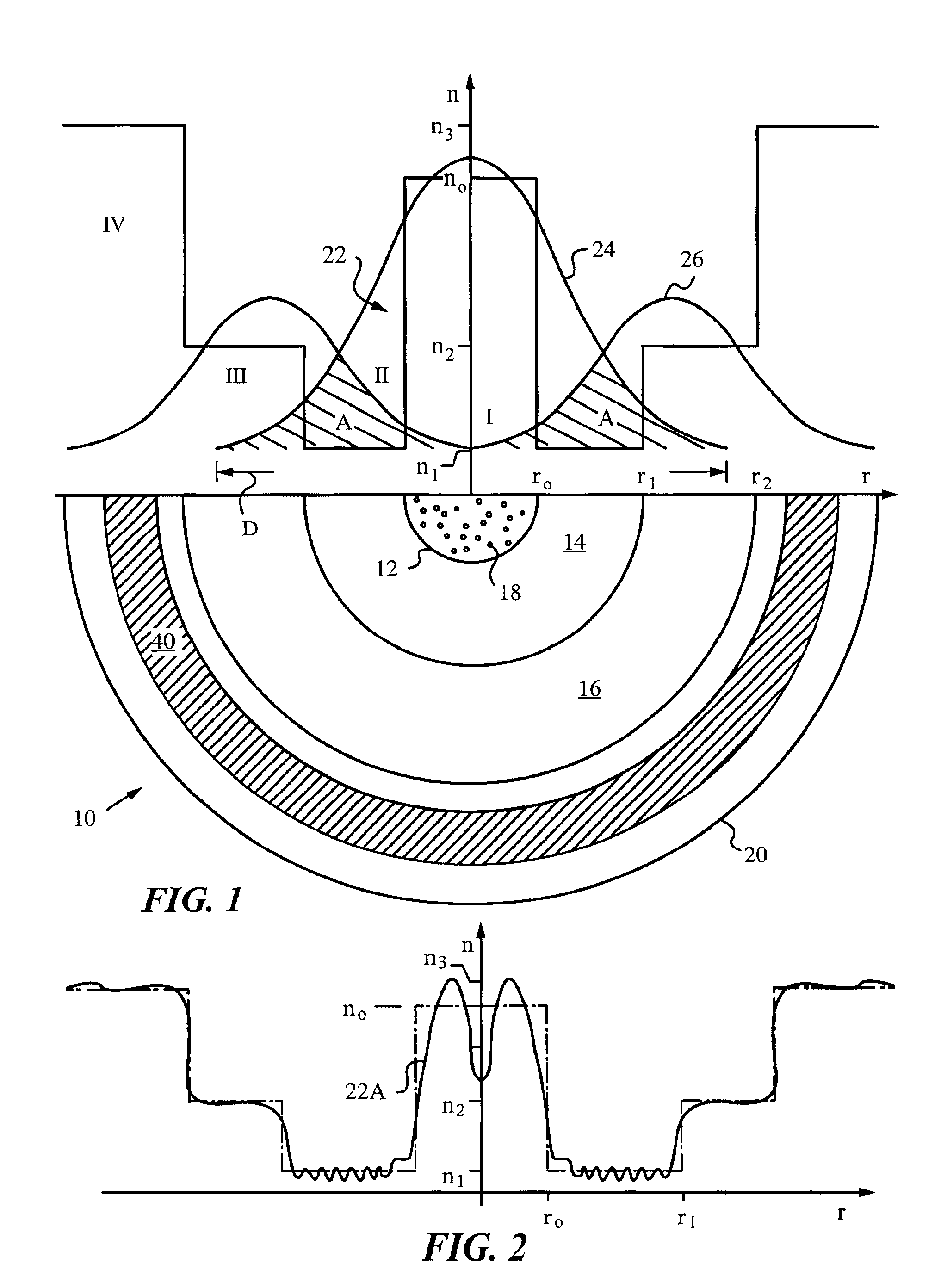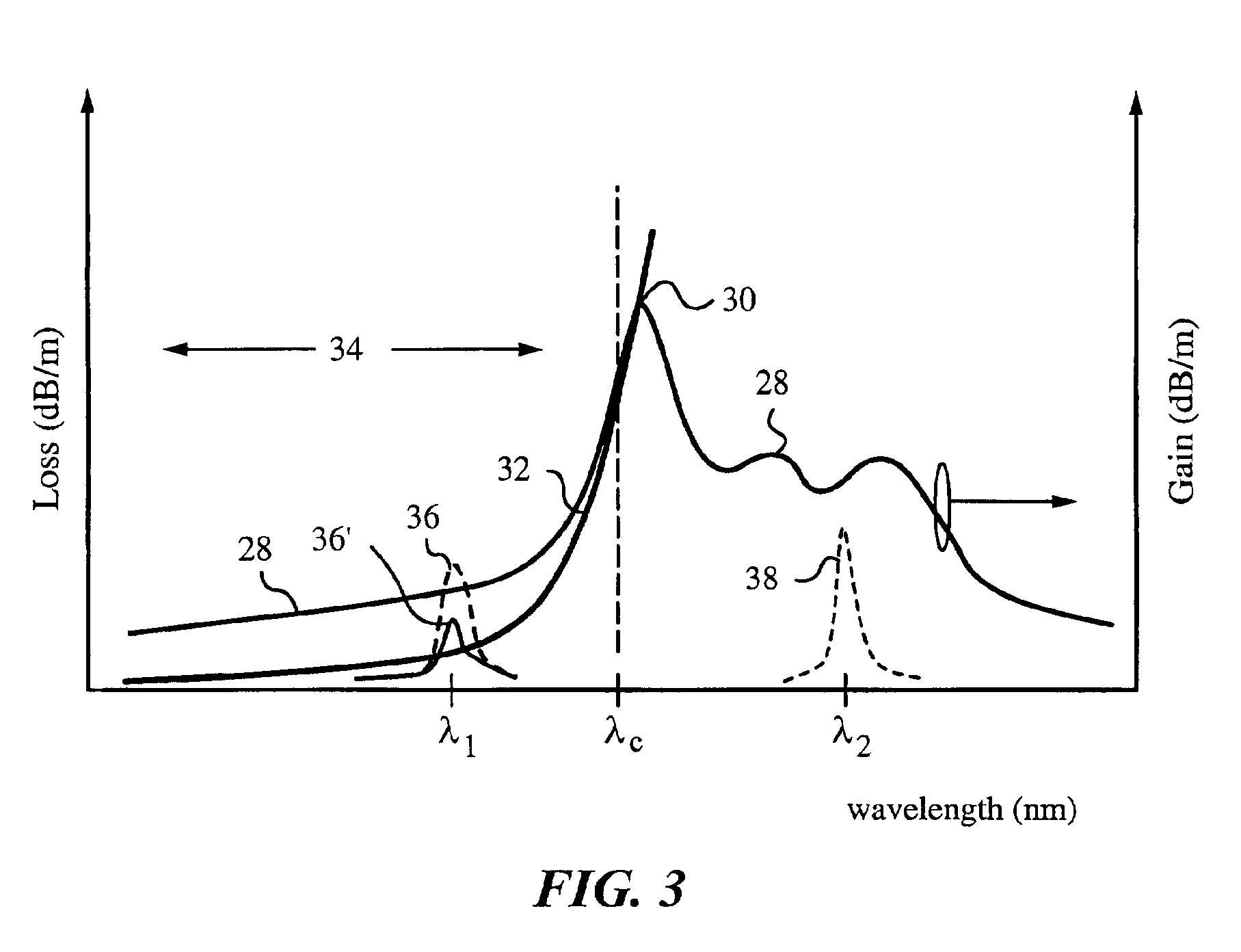Suppression of cladding mode loss in fiber amplifiers with distributed suppression of amplified spontaneous emission (ASE)
a fiber amplifier and cladding mode technology, applied in the field of fiber amplifiers with distributed suppression of amplified spontaneous emission, can solve the problems of introducing 1-2 db of additional insertion loss, difficult selection of fiber and fiber profile, and inconvenient cost-effectiveness, and achieve the effect of suppressing cladding mode loss
- Summary
- Abstract
- Description
- Claims
- Application Information
AI Technical Summary
Benefits of technology
Problems solved by technology
Method used
Image
Examples
Embodiment Construction
and the preferred and alternative embodiments is presented below in reference to the attached drawing figures.
BRIEF DESCRIPTION OF THE FIGURES
[0025]FIG. 1 is a diagram illustrating a partial cross-section of a fiber amplifier in accordance with the invention and illustrating a core mode and a cladding mode.
[0026]FIG. 2 is a graph illustrating a typical index profile in the fiber of FIG. 1.
[0027]FIG. 3 is a graph illustrating the effects of cladding mode losses in the fiber of FIG. 1.
[0028]FIG. 4 are graphs illustrating the effects of an absorbing polymer material embedded in outer cladding of the fiber of FIG. 1.
[0029]FIG. 5 is a diagram illustrating a partial cross-section of another fiber amplifier according to the invention.
[0030]FIG. 6 is a graph illustrating the phase-matching condition between core modes and cladding modes in the fiber amplifier of FIG. 5.
[0031]FIG. 7 are graphs of power levels of radiation in core mode and cladding mode.
[0032]FIGS. 8A&B are graphs illustratin...
PUM
 Login to View More
Login to View More Abstract
Description
Claims
Application Information
 Login to View More
Login to View More - R&D
- Intellectual Property
- Life Sciences
- Materials
- Tech Scout
- Unparalleled Data Quality
- Higher Quality Content
- 60% Fewer Hallucinations
Browse by: Latest US Patents, China's latest patents, Technical Efficacy Thesaurus, Application Domain, Technology Topic, Popular Technical Reports.
© 2025 PatSnap. All rights reserved.Legal|Privacy policy|Modern Slavery Act Transparency Statement|Sitemap|About US| Contact US: help@patsnap.com



